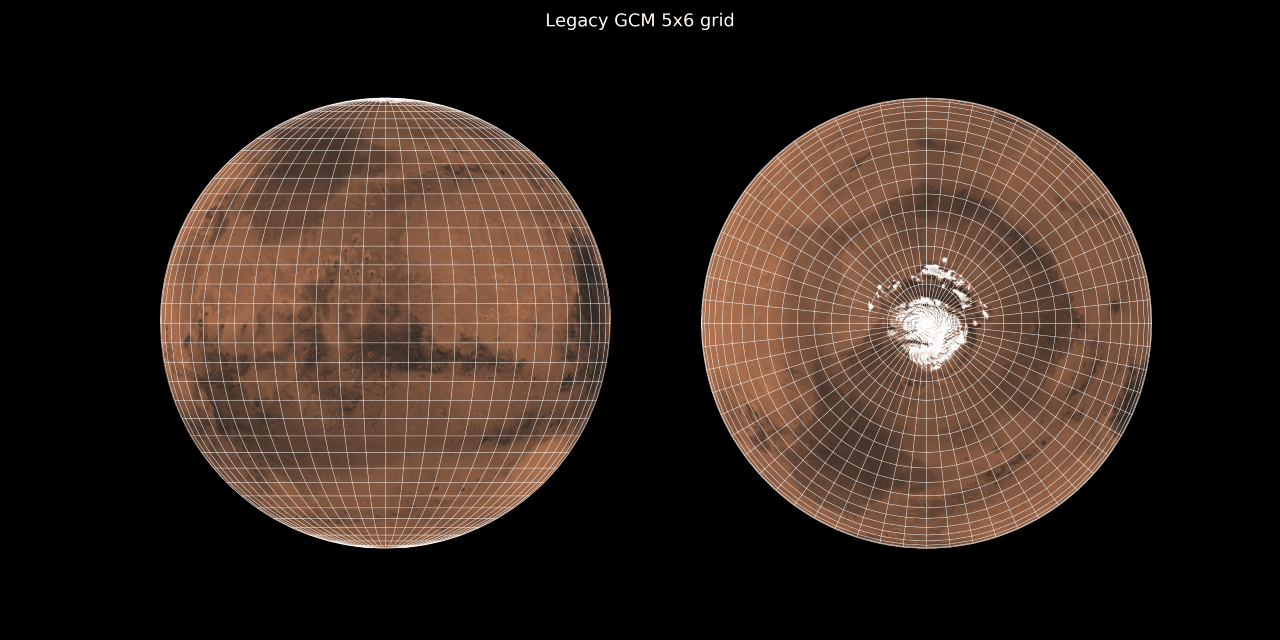Legacy C-Grid Core
The NASA Ames Legacy Mars GCM uses an Arakawa staggered C-Grid latitude/longitude finite difference dynamical core that was developed at Goddard Space Flight Center (Suarez and Takacs, 1995). The numerics are designed to conserve total energy and to ensure that the vertically integrated pressure gradient force is irrotational. It utilizes second-order differences for all terms except the advection of vorticity, which is fourth-order accurate. The model uses a terrain-following normalized pressure coordinate system in the vertical, with resolution decreasing from ~5 m near the surface to ~10 km at the model top (currently ~80 km). The original C-Grid transport scheme employed was inaccurate and diffusive, so we replaced it with a Van Leer I scheme with slope limitations (Hourdin and Armengaud, 1998). This is a finite-volume scheme that solves the flux form of the continuity and advection equations and allows for the zonal advection of tracers across more than one grid box in a given time step.





























